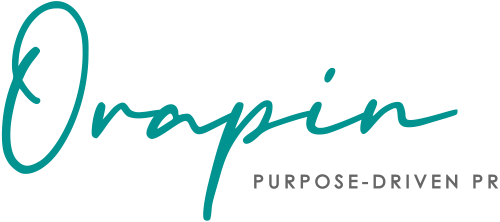
Consistent engagement, sharing perspective, and vulnerability are the keys to a successful thought leadership strategy
There are a variety of reasons why improving the visibility of your CEO or executive director should be top of mind for your marketing and communications team. Boosting executive visibility establishes thought leadership in your industry which in turn should bring in media mentions, interview opportunities, and speaking gigs. Further, it will drive engagement, entice donor activity, improve sales, and support any and all organizational goals.
Amplifying the voice of your executive is a key element of PR and marketing strategy. So how do you go about getting that executive, who we all know is super busy, to participate? Therein lies the tricky part! Here are our tips for increasing executive engagement to build authority and boost visibility.
Have them make time each month to share what is top of mind
As a comms team, you probably have a good idea of your CEO’s areas of passion, expertise, and positioning around topics that matter to your organization and constituents. But the world is an ever-changing place and in order to keep the executive and the organization visible on the world stage, you need to know what is top of mind and their position on things that are new and now.
- Make time each month to pick the executive’s brain. What is keeping them up at night? What do they perceive as the biggest challenges and opportunities for the organization? What is happening in the world that will affect the way they steer the ship?
- Share headlines and stories with the executive and ask how they would respond. Perhaps the response is enough to warrant a repost with a small commentary on LinkedIn. Perhaps it requires an entire blog or letter to the editor. Encouraging their engagement and having them share their thoughts on current events is a major boost for both the executive and the organization as a whole.
- Bring water cooler talk and constituent concerns to the executive’s desk. Do they agree with the word on the street? What is their position or unique point of view?
The information you glean during the “brain-picking” session can and most likely will be a driver of your PR strategy. Understanding their positioning will help determine how and where to pitch story ideas, when to offer the CEO as a spokesperson, what headlines might make a good byline or speaking topic, and what social chatter is worth having them respond to.
Increase activity through all communication channels
It may seem obvious, but it’s worth repeating – to build influence and visibility for your CEO, they’ll need to actively engage and participate in communications channels.
- On social media, particularly when it comes to LinkedIn and Twitter, your executive should be posting, commenting, and sharing content regularly. By connecting with other thought leaders, executives, members of the media, and partners, your executive is building their own reputation and thought leadership in your space.
- Encourage your executive to attend and speak at industry conferences. Getting on stage and sharing their story is crucial to supporting the reputation of your organization and to building awareness for your cause.
- Get them writing. Blogs and byline articles are great ways for executives to share their expertise and unique points of view. Long-form writing furnishes opportunities for the CEO to share their personal stories and passion.
People want to know what the executive thinks and what they have to say. The world needs to know their unique perspective, so help them share it and get it out there.
Encourage vulnerability
There are very few leaders of purpose-driven organizations who earned the executive title because it was just the next step up the corporate ladder. Many founded the organization and some were recruited to lead it, but 99.9% of them are in the boss’s chair because they have a passion, a connection, or a personal reason to support the mission and grow the organization.
Good storytelling comes from sharing personal stories. Some executive directors are more than willing to share their story and make the PR team’s job easy. But others will require more coaxing to become vulnerable. We all have a story to tell and putting yourself out there is hard! But, it is incredibly important. The media has no interest in talking about businesses that create widgets just to increase the bottom line. They want to write about humans doing extraordinary things because they overcame hardship or were inspired by personal events. They want to know and share the story of the CEO who founded her own recovery center after overcoming struggles with substance misuse. They want to cover the organization that was built to provide mental health services for youth because the founder’s sibling couldn’t access the help they needed.
Often these stories are deeply personal. Sometimes they are very difficult to share. But for the sake of the community and individuals that your organization serves, your CEO must share their story. They give a voice to the cause. They have the unique opportunity to tell the world why your organization exists and who it is helping.
Put your executive in the winner’s circle
In addition to the strategies mentioned above, it is always a great idea to secure a few awards for your executive. If you’ve done your homework and gotten them active on social, started them writing and contributing content, and secured speaking gigs and panels at industry conferences, then the awards should come easy. Awards tend to be the final feather in the cap for building executive clout. You know your CEO is great, others believe so too. When they win an important industry or leadership award, then they have that third-party endorsement that says “This is a person worth paying attention to.”
Creating opportunities for executive visibility will support every other PR strategy in your playbook. They may be just one person in a very large organization, but as the head honcho, they need to share their expertise, perspectives, and personal stories. If we know what an organization’s leader is thinking, where they are driving change, and why, then we trust that the organization as a whole is worth supporting, worth listening to, and worth engaging with. And with that support, we are all able to make a greater impact.

Diana Crawford is a seasoned public relations consultant with more than 15 years of agency, consulting, and in-house experience. She joined Orapin in 2013 and manages account services and client communications strategy development. She has worked across a variety of industries and has expertise with professional services, food/alcohol, health and wellness, lifestyle, sports, education, tech, and non-profit organizations.
